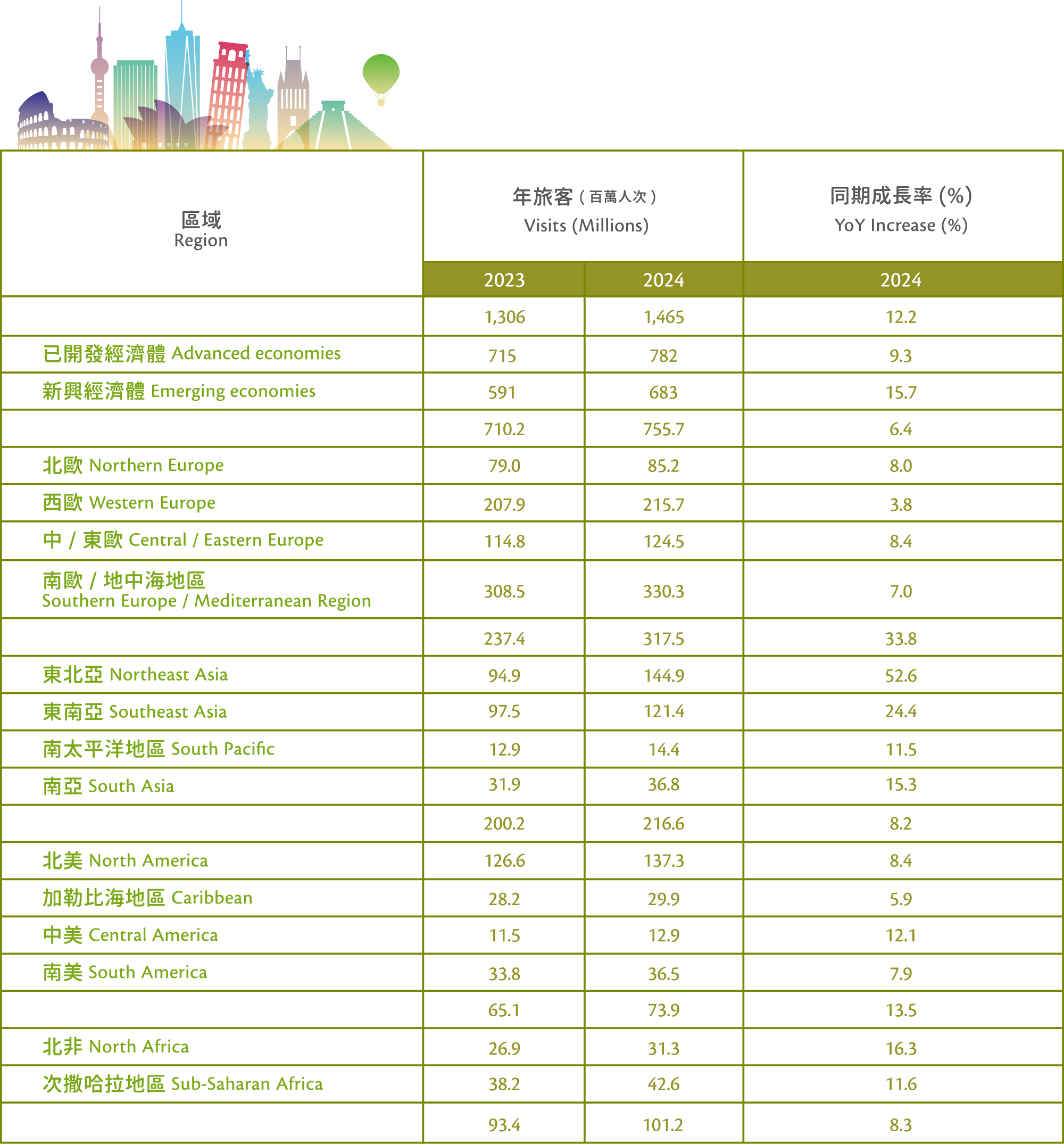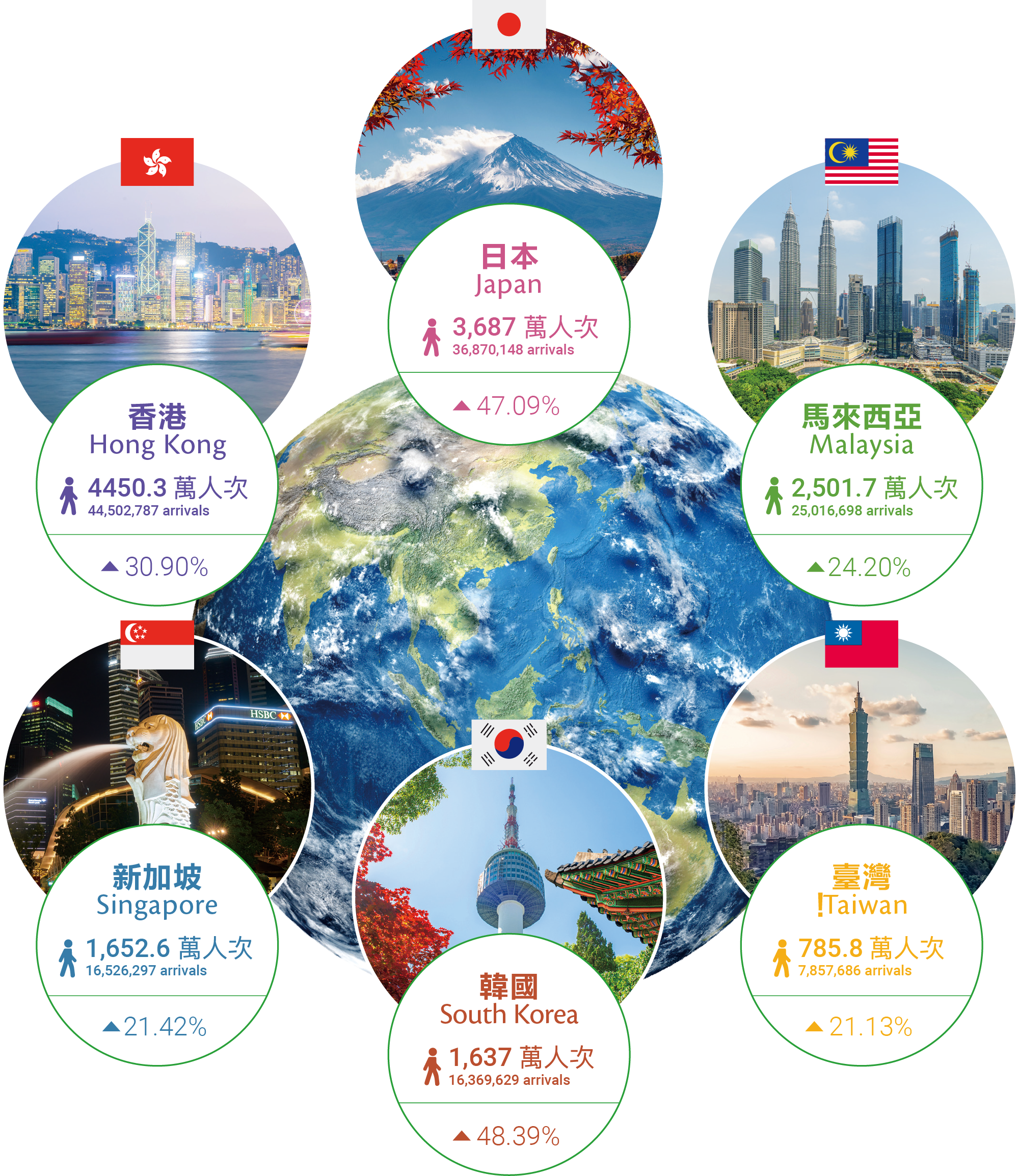The Global Travel Market
Overview of the Global Tourism Market
After the rapid recovery in 2023, the global aviation and tourism industries in 2024 returned to stable and sustainable growth, achieving substantial results. According to IATA data, global air passenger traffic (measured in revenue passenger kilometers, RPK) in 2024 increased by 10.4% year-on-year and exceeded pre-pandemic levels by 3.8%, reaching a new record high.In the tourism sector, the number of international tourist arrivals reached 1.4 billion in 2024, nearly equivalent to the pre-pandemic level. Looking ahead to 2025, as travel demand continues to grow, global air passenger numbers are expected to surpass 5 billion for the first time, while international tourist arrivals are projected to increase by 3–5% compared to 2024. The outlook for the aviation and tourism industries remains highly promising.
UN Tourism’s Confidence Index shows that 50% of industry professionals expect better prospects for international tourism in 2025 than in 2024. While global inflation and interest rates are projected to ease in 2025, boosting consumer demand in many countries, the sector still faces labor shortages. Macroeconomic conditions, geopolitics, and extreme weather will continue to affect transport and accommodation costs. In this environment, travelers favor value-for-money and closer-to-home trips, plan budgets more cautiously, and prioritize affordability and product value, seeking economical journeys and destinations and placing greater emphasis on experiences over material consumption. Acceptance of sustainable practices and destination-level sustainability management is also becoming a criterion in destination choice.

Overview of Asian Tourism Markets
Inbound visitor numbers rebounded in 2024 amid a broader tourism recovery.







